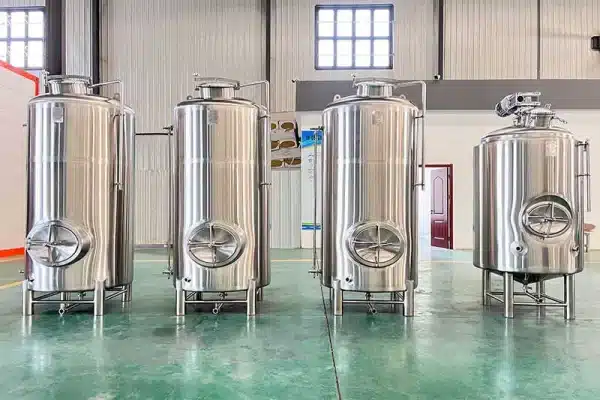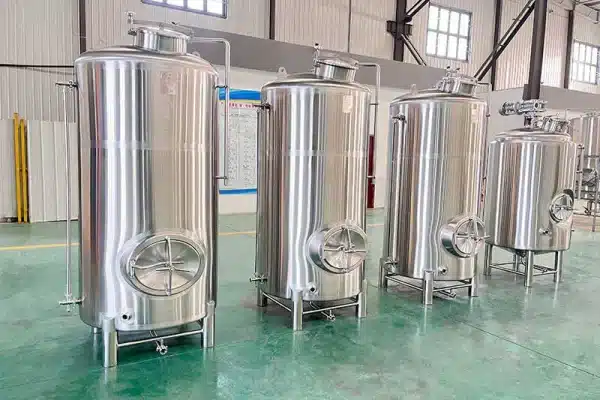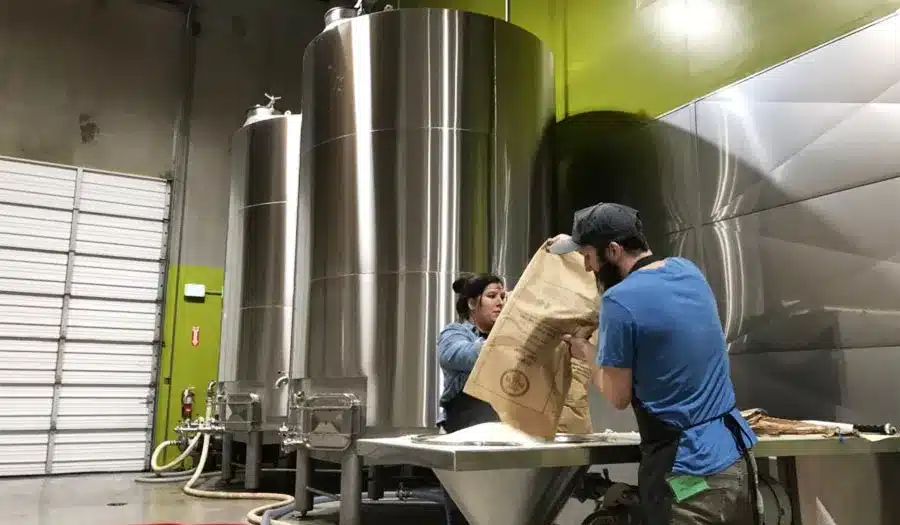Kombucha is one of the most common beverages in the modern beverage market. Kombucha not only meets the modern people’s pursuit of healthy living but also provides a variety of flavors. In response to the increasing demand for kombucha, kombucha breweries have now become a popular choice for both beginners and brewers. From developing a business plan and obtaining funding to sourcing organic ingredients and starting a brewery, this checklist will guide you through every necessary step to set up your own hard kombucha brewery business.
コンブチャ醸造所とは?
Kombucha is a fermented tea beverage, fermented from tea leaves, sugar, and a living tissue called “strain” (COBY, cheap bio-culture bacteria, and yeast). The unique flavor, rich nutritious bacteria, and hard health benefits are becoming more and more popular with consumers. Kombucha Brewery is not only a production facility, but also an enterprise that incorporates food science, market strategy, and innovation. As the market for healthy drinks continues to grow, the popularity of kombucha is also rising. Kombucha Brewery is a factory that specializes in the production of kombucha.
The main functions and features include:
- Production process: The economic process of kombucha includes steps such as material selection, blending, fermentation, filtration, and bottling. Brewing plants need to be equipped with certain equipment, such as fermentation tanks, filtration systems, and filling machines, to ensure the production of high-quality kombucha.
- Large-scale chemical production: With the differences in home brewing, kombucha breweries can achieve large-scale production to meet market demand. Beverage factories can produce a quantity of products and provide a variety of flavors and varieties of other kombucha.
- Quality control: The brewery establishes a strict quality control system to ensure that the content, acidity, and microbial biomass of each batch of products meet the standards. Consumer health projects.
- Market channels: Kombucha breweries can sell products through a variety of channels, including supermarkets, health food stores, restaurants, and online platforms. In addition, cooperation and distribution are also important ways to expand the market.
- Innovation and R&D: To attract consumers, Kombucha breweries often innovate products and develop different flavors and taste preferences.

Conduct Market Research
Kombucha breweries should conduct market research to better understand demand, competition, and opportunities in the kombucha industry. You should collect and analyze data such as consumer demographics, market trends, and market share to guide your business decisions and strategy. This research can help you understand the opportunities and challenges you may face and help guide decisions about formulations, branding, and target markets.
- Define your research goals
- Develop a research plan
- dentify your target market
- Conduct primary research
- Conduct secondary research
- Collect market data
- Analyze and interpret data and findings
- Analyze market trends
- Evaluate market opportunities
- Evaluate market changes
Develop a business plan.
Before opening a kombucha brewery, you first need to clarify your business model. You can choose from the following models:
- Self-brewing and self-selling: produce kombucha brews yourself and sell them directly to consumers.
- Cooperative production: cooperate with local bars and restaurants to provide customized products.
- Online sales: sell through e-commerce platforms to expand the market.
A detailed business plan can provide a clear direction for your business. Once you have a preliminary understanding of the market, you can start writing a business plan. The business plan will provide a clear development roadmap for your kombucha brewery.
The following is the basic structure of a business plan:
- Executive summary: briefly introduce the business concept and goals.
- Market analysis: analyze the target market, competitors, and consumer needs.
- Marketing strategy: formulate product pricing, promotion, sales channels, and other strategies.
- Operation plan: clarify production processes, staffing, and supply chain management.
- Financial forecast: formulate initial investment budget, operating income, and cost analysis, etc.
Kombucha Brewery Location
One of the key steps in starting a hard kombucha brewery is finding the right location for your brewery and taproom. The location you choose should not only comply with zoning laws but should also be convenient for your target market to reach. Before settling on a location, always check local zoning laws to ensure that you can operate a brewery in that particular location. Choose a location that is easily accessible to your target market. Consider factors such as accessibility to public transportation, availability of parking spaces, and overall convenience for patrons. Evaluate space requirements for production, storage, and direct sales. Make sure the location has enough room to accommodate things like brewing equipment, fermentation tanks, raw material storage, packaging materials, and a taproom for customers to taste and purchase the product. Different areas may have different regulations for setting up alcohol-related businesses. In addition, the space should be suitable for production, storage, and direct sales to ensure smooth operations.

Kombucha Brewery Equipment
Brewing kombucha requires specific equipment and materials, which can be a significant expense for starting a kombucha brewery. Costs will vary depending on the scale of operations, the degree of automation, and the quality of materials. These equipment and tools help ensure that the fermentation process of kombucha goes smoothly and that the final kombucha has an excellent taste and flavor.
- 発酵タンク: These are usually food-grade stainless steel tanks that can hold tens to thousands of liters of liquid. These tanks are designed to maintain a stable fermentation environment and are usually equipped with temperature control systems and stirring devices.
- Heating and cooling systems: Used to keep the fermentation tanks within the optimal temperature range to ensure the stability of the fermentation process. This may include thermostats, cooling devices, and heating devices.
- Filtration system: Used to remove solid impurities and residual biofilm from the fermentation liquid. Including fine mesh filters, centrifugal separators, etc.
- Stirring device: Used to evenly mix the liquid in the fermentation tank, which helps control the fermentation process and improve product consistency.
- Packing equipment: Bottling machines are automated bottling equipment used to transfer kombucha into bottles and seal them. The labeling machine is used to label the bottles, including brand information, ingredient description, production date, etc.
- Cleaning and sterilization equipment: used to clean and sterilize equipment such as fermentation tanks and bottles that come into contact with liquids to ensure the hygiene and safety of the products. Including high-temperature steam cleaning machines, chemical cleaning equipment, etc.
- SCOBY: The fermentation flora of kombucha, that is, the “symbiotic culture of bacteria and yeast”, is the key to the fermentation process.
How Much Does Kombucha Brewing Equipment Cost?
Setting up a state-of-the-art commercial kitchen is a critical first step for any kombucha production company. These specialized equipment and supplies can account for a significant portion of startup costs, typically ranging from $50,000 to $150,000 or more, depending on the size of the operation.
- High-capacity stainless steel brewing tanks and fermentation tanks, which cost between $5,000 and $20,000 each.
- Pasteurizers, filtration systems, and other processing equipment to ensure consistent product quality, cost $10,000 to $50,000.
- Commercial-grade refrigeration equipment and temperature-controlled storage space to maintain optimal fermentation conditions, about $15,000 to $30,000.
- Stainless steel countertops, sinks, and other food-grade surfaces for preparation and cleaning, about $5,000 to $15,000.
- Bottling, capping, and labeling machines to streamline the packaging process, ranging from $20,000 to $50,000.
When making a budget, please conduct a detailed costing based on your specific needs and market conditions. You can also refer to local equipment suppliers and market conditions and make appropriate adjustments as needed. I hope this information will help you better plan the opening of your kombucha brewery!

よくあるご質問
What is the initial investment for starting a kombucha brewery?
The initial investment may range from a few hundred thousand dollars to several million dollars, depending on the size of the plant, equipment configuration, degree of automation, geographic location, market positioning, and other factors.
- Small plant (small number of equipment, low degree of automation): about $100,000 to $500,000.
- Medium-sized plant (medium-sized equipment, partial automation): about $500,000 to $1.5 million.
- Large plant (fully automatic equipment, large-scale production): may exceed $1.5 million.
What is the cost of raw materials?
- Tea: about $20 to $100 per kilogram, depending on the type of tea.
- Sugar: about $1 to $3 per kilogram.
- SCOBY: The initial purchase price may be $100 to $500, after which it can reproduce on its own.
How to choose a suitable fermentation container?
Choose corrosion-resistant materials such as glass or ceramics, and avoid metal containers. The capacity should be selected according to the scale of production, and 50 liters to 1000 liters of fermentation tanks are common.
発酵温度をコントロールするには?
The ideal fermentation temperature for kombucha is between 20-30°C. The temperature can be monitored using a thermostat, and if necessary, a heating pad can be provided around the fermentation container, or a heat blanket can be used if in a cooler area.
How long does it take to ferment before it is ready for drinking?
The first fermentation is usually 7-14 days, depending on the ambient temperature and personal taste. The second fermentation (if flavor ingredients are needed) can last another 2-7 days.




